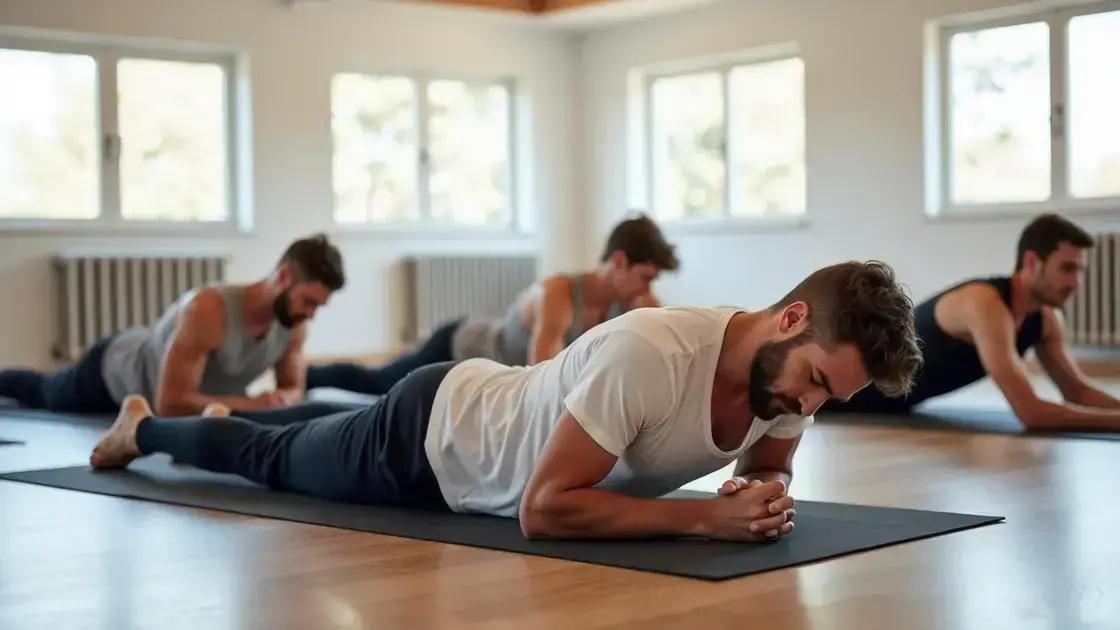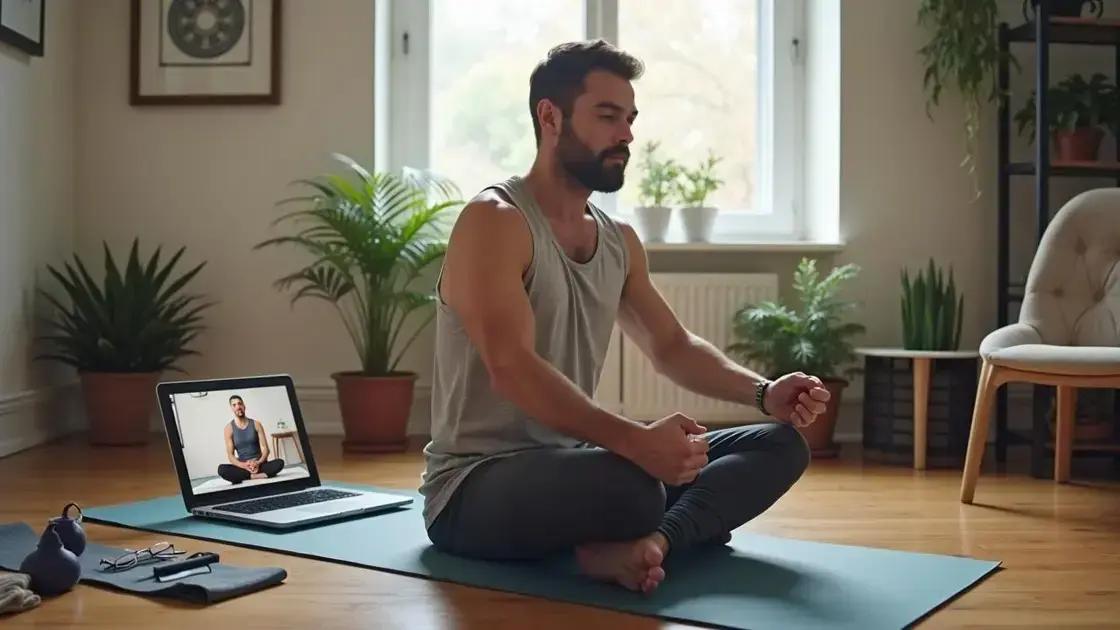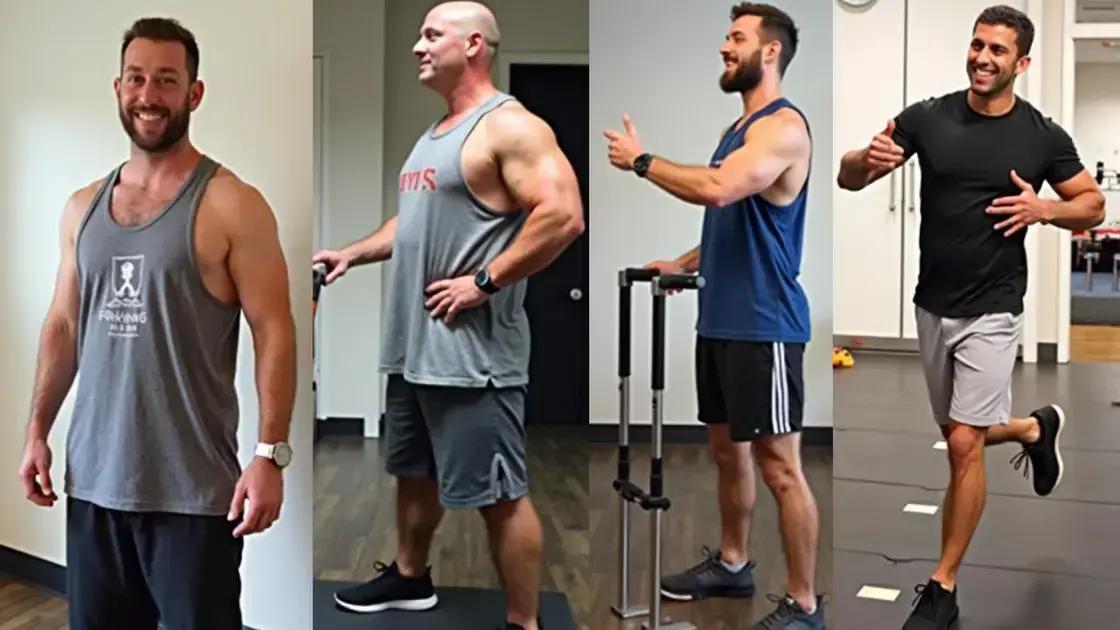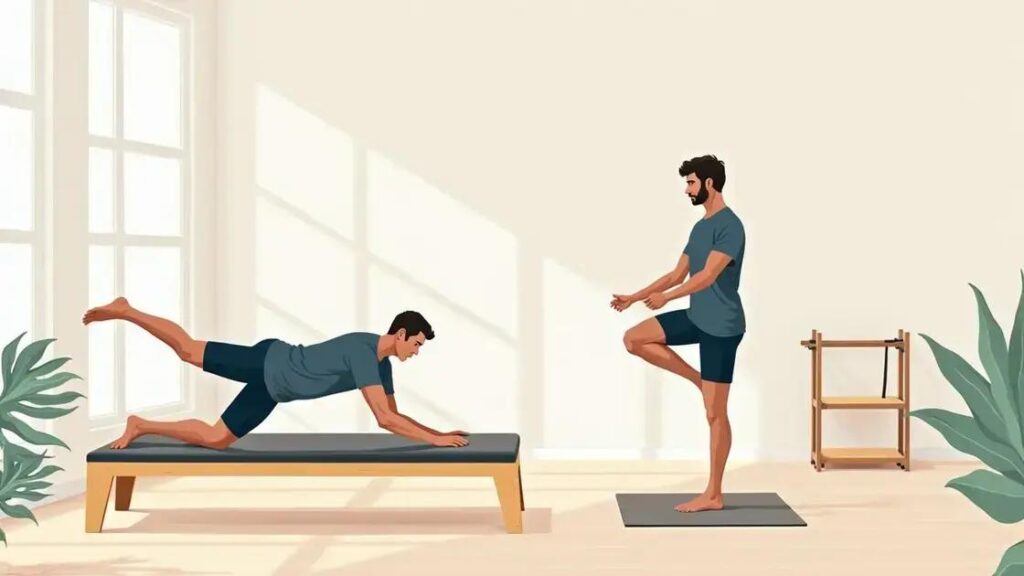Low-impact Pilates plays a significant role in men’s fitness trends by improving core strength, flexibility, posture, and overall wellness, while being gentle on the joints. It is suitable for men of all ages and skill levels and can be easily incorporated into any fitness routine through classes or online resources.
Low-impact Pilates is gaining traction in men’s fitness trends, offering numerous benefits such as improved flexibility, strength, and posture. Unlike traditional workouts that can be hard on the body, Pilates provides a gentle approach that promotes overall health. In this article, we will delve into the role of low-impact Pilates in men’s fitness, explore its many benefits, and share tips on how to incorporate it into your routine effectively.
Understanding Low-Impact Pilates

Low-impact Pilates is an excellent workout option that focuses on core strength, flexibility, and balance. This type of exercise is suitable for men of all fitness levels, particularly those who are just starting their fitness journey or recovering from an injury. Unlike high-impact workouts, low-impact Pilates ensures minimal strain on the joints while still providing effective results.
What is Low-Impact Pilates?
Low-impact Pilates involves a series of controlled movements that are performed mostly on a mat or using specialized equipment like the Reformer. The emphasis is on form and alignment, which strengthens the body without overexertion. Men engaging in low-impact Pilates will find that it enhances their overall physical fitness while promoting relaxation.
Key Principles of Low-Impact Pilates
The core principles of low-impact Pilates include concentration, control, centration, flow, precision, and breathing. Each of these elements plays a vital role in executing movements effectively and gaining maximum benefits. By focusing on quality rather than quantity, men can achieve substantial gains in strength and flexibility.
Historical Context
Initially created by Joseph Pilates in the early 20th century, the method was designed for rehabilitation purposes. Over time, it has evolved into a popular fitness trend embraced by many. Today, low-impact Pilates is recognized for its effectiveness in improving athletic performance, enhancing body awareness, and promoting overall well-being.
As more men seek functional strength and flexibility, low-impact Pilates continues to rise in popularity, making it a vital component of modern fitness trends.
Benefits for Men’s Fitness

Engaging in low-impact Pilates offers numerous benefits for men’s fitness, making it a valuable addition to any workout regimen. One significant advantage is improved core strength. Strengthening the core is crucial for stability in daily activities as well as sports performance. A strong core also helps prevent injuries, especially for men who engage in strength training or high-impact sports.
Enhanced Flexibility
Low-impact Pilates exercises promote flexibility throughout the body. Many men experience tight muscles from various activities, and Pilates helps to lengthen and stretch these muscles. Enhanced flexibility can improve athletic performance and decrease the risk of injuries.
Better Posture and Alignment
Regular practice of low-impact Pilates leads to better posture and alignment. Many men struggle with poor posture due to long hours of sitting or heavy lifting. Pilates teaches awareness of body alignment, helping to correct these issues and reduce back pain.
Mental Well-Being
Low-impact Pilates also supports mental well-being. The focus on breathing and concentration during movements provides a meditative effect. This can help reduce stress and anxiety, which is beneficial for overall health.
Additionally, low-impact Pilates can enhance sports performance by improving balance, coordination, and muscular endurance. This makes it an ideal choice for men looking to enhance their fitness through a holistic approach that combines physical and mental benefits.
How to Incorporate Pilates

Incorporating low-impact Pilates into your fitness routine is easier than you might think. Here are several straightforward steps you can follow to incorporate Pilates:
1. Start with a Class
Joining a Pilates class led by a certified instructor is a great way to learn the basics. Look for local studios or community centers offering classes specifically for men or beginners to ensure you feel comfortable.
2. Use Online Resources
If in-person classes aren’t an option, consider utilizing online Pilates videos. Many fitness platforms offer guided sessions that you can follow at home. Make sure to choose videos that focus on low-impact routines to align with your fitness goals.
3. Create a Routine
Set a consistent schedule by allocating specific days for Pilates practice. Aim for at least two to three sessions per week. Consistency will help you build strength and flexibility over time.
4. Listen to Your Body
As you begin practicing Pilates, pay attention to your breathing and movements. It is essential to listen to your body to avoid overexertion. If an exercise feels uncomfortable, modify it or consult your instructor for alternatives.
5. Mix with Other Workouts
Low-impact Pilates can complement other strength training or cardio workouts. Consider alternating Pilates sessions with your usual exercises to maintain a balanced fitness plan.
By gradually introducing Pilates into your routine, you will enhance your overall fitness and enjoy the many benefits that come with it.
Real-Life Success Stories

Real-life success stories often inspire others to take up new challenges like low-impact Pilates. Here are a few stories from men who have experienced significant transformations through this practice:
John’s Journey
At 45, John struggled with chronic back pain and limited mobility. He decided to try low-impact Pilates after hearing about its benefits for core strength. After three months of consistent practice, he reported a marked improvement in his pain levels and overall flexibility. “I never thought I could touch my toes again!” he said. John now encourages his friends to join him in Pilates classes.
Michael’s Fitness Transformation
Michael, a 32-year-old athlete, faced injuries that sidelined him from his favorite sports. He incorporated low-impact Pilates into his recovery plan. As a result, he discovered that Pilates helped him strengthen his core without putting too much pressure on his injuries. Six months later, he returned to sports stronger and more balanced than before. Michael notes, “Pilates saved my athletic career!”
David’s Weight Loss Story
David, a 28-year-old accountant, wanted to lose weight while avoiding high-impact exercises. He started low-impact Pilates once a week. Within four months, he lost over 20 pounds while gaining muscle tone and flexibility. David shared, “I love how Pilates makes me feel, both mentally and physically. It has changed my life!”
These inspiring stories illustrate the impact that low-impact Pilates can have on men’s health and fitness, demonstrating its appeal and effectiveness in different situations.
Embracing Low-Impact Pilates for Men’s Fitness
Low-impact Pilates offers a unique approach to fitness that caters to men of all ages and fitness levels. With its focus on core strength, flexibility, and overall wellness, it complements various workout routines and enhances physical capabilities.
The benefits for men’s fitness are substantial, including improved posture, reduced pain, and greater mental well-being. Real-life success stories highlight how this practice has transformed the lives of individuals, making it clear that adopting Pilates can lead to meaningful changes.
As you consider your fitness journey, think about how integrating low-impact Pilates can enhance your health and wellness. Whether through classes or online resources, taking the first step towards this beneficial practice can lead to a stronger, healthier, and happier you.
FAQ – Frequently Asked Questions about Low-Impact Pilates
What are the primary benefits of low-impact Pilates for men?
Low-impact Pilates helps improve core strength, flexibility, posture, and mental well-being while minimizing strain on the joints.
How often should I practice low-impact Pilates?
It is recommended to practice low-impact Pilates at least two to three times a week to see significant improvements in strength and flexibility.
Can beginners participate in low-impact Pilates classes?
Absolutely! Low-impact Pilates is suitable for beginners as it emphasizes controlled movements and proper form, making it easy to start.
What equipment do I need for low-impact Pilates?
You can start with a yoga mat. As you progress, you may consider using a Pilates reformer or other equipment like resistance bands.
Are there any specific age groups that benefit the most from low-impact Pilates?
Low-impact Pilates benefits individuals of all ages, particularly older adults and those recovering from injuries.
How can I find a Pilates class near me?
Look online for local fitness studios or community centers offering Pilates classes. Many places also offer virtual classes.












